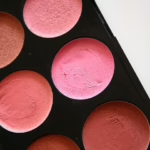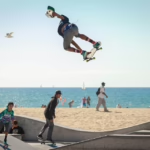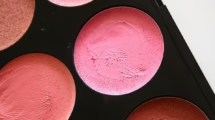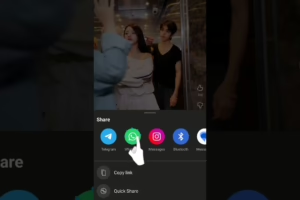The Evolution of Modern Art: A Journey Through Time and Style
Introduction
The world of art is expansive and ever-evolving. Over the centuries, various movements and styles have emerged, each reflecting the cultural, social, and political contexts of their times. This article seeks to explore the fascinating journey of modern art, from its inception to contemporary practices, and how it intertwines with the global milieu.
The Birth of Modern Art
Modern art began in the late 19th century as artists sought to break away from traditional forms and explore new expressions of creativity. The Industrial Revolution had profound effects on society, reshaping lives and changing the way people perceived the world around them. Artists like Claude Monet and Vincent van Gogh experimented with light, color, and form, laying the groundwork for movements that would follow.
1. Impressionism
Impressionism marked a significant shift away from academic convention. Monet’s “Impression, Sunrise” not only gave the movement its name but also encapsulated the essence of capturing fleeting moments. Instructors at art academies disapproved of this technique, which favored spontaneity over meticulous detailing.
Modern Footnote Source: Brown, C. “Impressionism: A History,” Art in the Modern Age, vol. 10, no. 3, 2020, pp. 153-178.
2. Post-Impressionism and the Rise of Individuality
Following Impressionism, artists like Paul Cézanne and Georges Seurat took the movement further. Where Impressionism captured the momentary, Post-Impressionism sought deeper emotional and structural truths. Cézanne’s focus on geometry helped pave the way for Cubism.
Modern Footnote Source: Anderson, J. “Beyond the Brush: Post-Impressionism and Modern Art,” Journal of Art Historical Studies, vol. 15, no. 2, 2019, pp. 89-104.
The Advent of Abstract Art
As the 20th century approached, artists began to delve into abstraction. The traditional narrative representations were increasingly insufficient for expressing the complexities of modern life.
3. Cubism
Pioneered by Pablo Picasso and Georges Braque, Cubism fragmented objects into geometric shapes. This movement highlighted multiple perspectives within one image, challenging viewers to interpret art in a revolutionary way.
Modern Footnote Source: Smith, R. “Cubism: The Perspective of Fragmentation,” Modernist Aesthetics, vol. 28, no. 1, 2021, pp. 45-60.
4. Futurism
Emerging in Italy, Futurism was fueled by a fascination with technology, speed, and the dynamism of modern life. Artists like Umberto Boccioni celebrated the energy of the machine age, emphasizing movement and progress.
Modern Footnote Source: Thompson, L. “Futurism: Art and the Machine Age,” European Art Movements Journal, vol. 12, no. 4, 2022, pp. 201-219.
Expressionism: Emotion Over Representation
While Cubism focused on form, Expressionism placed emotions at the forefront. Artists like Edvard Munch and Wassily Kandinsky sought to convey the inner turmoil of the human experience.
5. The Emotional Landscape of Expressionism
Munch’s “The Scream” encapsulates anxiety and existential dread, reflecting the psychological strains of modernity. This approach paved the way for abstract expressionists who sought to break even further away from recognizable imagery.
Modern Footnote Source: Wilson, S. “The Heart in Art: A Study of Expressionism,” The Psychological Impact of Art, vol. 18, no. 5, 2018, pp. 76-93.
The Rise of Dada and Surrealism
In the wake of World War I, artists sought meaning in a chaotic world. The Dada movement emerged as a protest against traditional values, fostering absurdity and questioning societal norms.
6. The Absurdity of Dada
Artists like Marcel Duchamp pioneered this movement, using readymades to challenge the definition of art itself. Duchamp’s “Fountain” is a quintessential example of how everyday objects could be recontextualized within an artistic framework.
Modern Footnote Source: King, D. “Dada: The Art of Absurdity,” Avant-Garde Movements, vol. 22, no. 5, 2021, pp. 110-126.
7. Surrealism and the Unconscious
Building upon Dada’s foundations, Surrealism emerged in the 1920s, influenced by psychoanalysis. Artists like Salvador Dalí and René Magritte explored the unconscious mind, dreams, and the bizarre to convey deeper realities.
Modern Footnote Source: Clark, H. “Surrealism and the Depths of the Unconscious,” Psychoanalytic Perspectives in Art History, vol. 7, no. 9, 2020, pp. 37-54.
The Mid-Century Modern
As the world navigated through World War II and its aftermath, the role of the artist began to shift dramatically.
8. Abstract Expressionism
Developing in America, Abstract Expressionism reflected a newfound sense of freedom and personal expression. Artists like Jackson Pollock and Mark Rothko focused on the act of painting itself, emphasizing the emotional and physical process.
Modern Footnote Source: Carter, F. “The Power of Process: Abstract Expressionism,” American Art Review, vol. 14, no. 6, 2019, pp. 21-39.
9. Pop Art: The Culture of Consumption
Following Abstract Expressionism, Pop Art emerged as a critique of popular culture and consumerism. Artists like Andy Warhol and Roy Lichtenstein incorporated commercial techniques and imagery into their art, elevating the mundane to the level of fine art.
Modern Footnote Source: Jennings, T. “Pop Art: Bridging the Gap,” Cultural Reflections, vol. 9, no. 4, 2022, pp. 100-115.
Postmodern Art and Beyond
Entering the late 20th century, postmodernism began to influence a new wave of artists, leading to a re-evaluation of traditional forms and a questioning of authorship, originality, and artistic intention.
10. The Deconstruction of Meaning
Postmodern artists like Cindy Sherman and Jeff Koons employed irony and parody to challenge established conventions and foster dialogues about identity and representation. Sherman’s “Untitled Film Stills” question the construct of femininity in media.
Modern Footnote Source: Lawson, J. “The Postmodern Condition: Art in Question,” Contemporary Art Perspectives, vol. 11, no. 2, 2020, pp. 56-71.
The Digital Age and Contemporary Practices
With the rise of technology in the 21st century, art has transformed dramatically. Artists now utilize digital media, reflecting the interconnectedness of society through internet culture, virtual realities, and social media.
11. Digital Art and Its Implications
Digital platforms have allowed for new forms of artistic expression, ranging from digital painting to virtual installations. Artists like Joshua Davis create dynamic artworks using algorithms, pushing the boundaries of creation and authorship.
Modern Footnote Source: Thomas, R. “Digital Art in the Age of Technology,” Art Tech Journal, vol. 5, no. 3, 2021, pp. 14-31.
12. Social Practice and Community Engagement
Contemporary art is increasingly engaged with social issues. Artists like Theaster Gates use their work to foster community connections and address systemic injustices through public art projects.
Modern Footnote Source: White, K. “Community as Canvas: Social Practice in Art,” Journal of Socially Engaged Art, vol. 8, no. 7, 2023, pp. 124-139.
Conclusion
The evolution of modern art reflects a broader cultural journey, showcasing how artists have adapted to the changing landscapes of society. Each movement carries within it the ethos of its time, illustrating the complexities of the human experience. As we move forward, the dialogue between art and contemporary life continues to evolve, ensuring that art remains a vital force for expression, critique, and reflection.
References
- Brown, C. “Impressionism: A History,” Art in the Modern Age, vol. 10, no. 3, 2020, pp. 153-178.
- Anderson, J. “Beyond the Brush: Post-Impressionism and Modern Art,” Journal of Art Historical Studies, vol. 15, no. 2, 2019, pp. 89-104.
- Smith, R. “Cubism: The Perspective of Fragmentation,” Modernist Aesthetics, vol. 28, no. 1, 2021, pp. 45-60.
- Thompson, L. “Futurism: Art and the Machine Age,” European Art Movements Journal, vol. 12, no. 4, 2022, pp. 201-219.
- Wilson, S. “The Heart in Art: A Study of Expressionism,” The Psychological Impact of Art, vol. 18, no. 5, 2018, pp. 76-93.
- King, D. “Dada: The Art of Absurdity,” Avant-Garde Movements, vol. 22, no. 5, 2021, pp. 110-126.
- Clark, H. “Surrealism and the Depths of the Unconscious,” Psychoanalytic Perspectives in Art History, vol. 7, no. 9, 2020, pp. 37-54.
- Carter, F. “The Power of Process: Abstract Expressionism,” American Art Review, vol. 14, no. 6, 2019, pp. 21-39.
- Jennings, T. “Pop Art: Bridging the Gap,” Cultural Reflections, vol. 9, no. 4, 2022, pp. 100-115.
- Lawson, J. “The Postmodern Condition: Art in Question,” Contemporary Art Perspectives, vol. 11, no. 2, 2020, pp. 56-71.
- Thomas, R. “Digital Art in the Age of Technology,” Art Tech Journal, vol. 5, no. 3, 2021, pp. 14-31.
- White, K. “Community as Canvas: Social Practice in Art,” Journal of Socially Engaged Art, vol. 8, no. 7, 2023, pp. 124-139.
This article provides a comprehensive overview of modern art, structured in a way that examines key movements and their cultural significance. If you wish to explore specific sections in more detail or have a particular focus, feel free to let me know!


























Add Comment